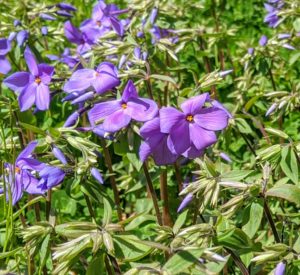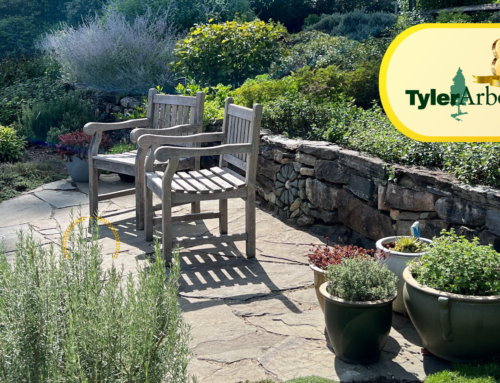Gardening is a wonderful way to interact with the natural world. It’s an opportunity to get outdoors, feel the sun and the breeze, smell the soil, and be part of a world that we tend to lose touch within our day to day lives. But how do we garden in an environmentally supportive way? How do we create a space for flora and fauna in our backyard or our patio?
It’s easier than you might think and, if done correctly, might even mean less work for the gardener. The key is to think about the landscape in an integrated way and to make wise and effective use of the wonderful resources you already have on hand.
Step One: Go With the Flow
For the past hundred years or so, we’ve thought of water as a liability on our property. We put gutters on our roofs to catch the rain and channel it toward the street where there are storm drains designed to take it away from our property as quickly as possible. But that infrastructure no longer can sustain us due to higher population density and aging pipes. More floods are occurring which carries pollutants into the local creeks, streams and rivers from our roadways and other hard surfaces. Our watersheds can no longer support this activity. Our neighbors downstream are suffering because of how fast water is entering into the system.
You can help by installing a rain barrel. Many townships, municipalities and garden centers offer them for sale, and they take about an hour or less to install. A good resource is the Pennsylvania Resource Council which offers free classes with free barrels. Another source is the Penn State Extension Service.
Once you have your barrel in place it will capture the water from your roof and store it for use on your garden. You can either attach a hose to the spigot or fill your watering can manually. This allows the water that falls on your property to stay on your property and filter slowly back into the ground, where the plants will use the water and the groundwater (aquifer) recharges.
Another wonderful option is to install a rain garden. This takes a little more work in order to ensure proper function, but the results can be very rewarding. Rain gardens, when designed properly, can add a beautiful and unique garden to your home landscape while helping to reduce the amount of water entering into our systems and into our local streams and rivers. Once again, PennState extension has great resources on how to get started!
Step Two: Turn Yard Waste into Treasure
At Tyler Arboretum, if it falls on the property it stays on the property. Autumn leaves are shredded and blown back into the garden beds to recycle nutrients into the soil. Branches that come down are chipped and spread beneath trees (and some are historic dating back to 1850s) to improve soil structure. All the weeds extracted are composted. And you can do the same in your own back yard…even if you don’t have a wood chipper!
Consider raking your leaves back into the garden beds and leaving your perennials standing until the spring. Many critters like bees and some species of butterflies rely on leaf litter and dried plant stalks to overwinter. Giving them this space in your garden will help protect their populations.
When the weather gets warmer, collect that debris and either dispose of it through your township or start a compost pile or bin. You don’t need much to get started on composting. If you have the space, dedicate a corner of the yard to be your compost pile. I recommend setting out a stone or wooden frame to create an area for your pile and to make sure that you have the room to ‘turn’ your compost. Digging and moving a pile is what allows your material to break down evenly.
You can also use a tumbler, which is an elevated bin with air holes that you can turn without a shovel. They are sold online or in most garden stores. You can even start your own indoor bin for food waste with nothing more than an old bucket with a lid! Cat litter bins work very well. Just make sure to drill some air holes in the top and take your compost outside to your compost pile or tumbler periodically. Vegetable peelings, fruit cores and eggshells work very well, but stay away from meat or dairy. Not so handy with the drill and would prefer to buy an indoor composter? Here’s the article with some reviews.
The key to creating a good compost pile is to make sure you have the right ratio of ‘brown to green’. That means the right balance of ‘brown’ dry waste to ‘green’ or moisture rich waste. Brown material are last year’s dried leaves, while green material would be the weeds you pull from your garden during the growing season. I like to empty my compost bin into my vegetable garden in the spring before I do my garden cleanout, then use the old leaves and the stalks of last year’s perennials to start my compost for the next year. That gives you a good base to build on throughout the season.
The result is that rather than sending your yard and kitchen waste away to the landfill you can keep those valuable nutrients on your property. A compost bin or pile allows you to create plant food with the material you already have on hand. Bonus, it might save you some money on fertilizer! And if you happen to have an elevated tumbler, set a shallow pan below it and periodically drain your barrel to catch the valuable ‘compost tea’. Compost tea is a mild, organic fertilizer and contains micro-organisms that you can use on house plants and kitchen herbs. If you don’t have an elevated tumbler but are interested in making compost tea, don’t despair! Just set some aged compost in cheesecloth and ‘brew’ it (soak it) in water overnight. The results are well worth it.
Step Three: Make Your Yard a Wildlife Hot Spot
Design your garden so that critters of all shapes and sizes will be able to find food, water and shelter all year round. A great way to do this is to plant native plants with staggered bloom times so that there is always something that a hummingbird, butterfly or bee could visit for some nectar or pollen. Try to include some plants that have seeds or berries in the fall for the migrating birds, and leave your perennials standing through the winter to create shelter. If you’d like, you could even put up a bird or bat house, or a solitary or mason bee house.

Creating a wildlife hotspot can be done in any size yard, or even a patio! There are many beautiful native plants that do verywell in pots, for instance turtlehead (Chelone glabra), foamflower (Tiarella cordifolia), hummingbird mint or anise hyssop (Agastache rupestre) and creeping phlox (Phlox stolonifera). Add bird feeders and mason bee house by hanging them on the wall.
These strategies can help you as well. Native plants evolved to live here and in general they don’t often require soil amendments or fertilization. Having plants that bloom at staggered times will mean that the gardener will always have something beautiful to look at. Plus, all the extra birds and butterflies that visit the yard is great entertainment for long summer evenings.
Step Four: Enjoy…and Join In!
Managing your yard in an ecological way creates a wonderful opportunity for you and your family to watch the natural world. You would be astonished at what will appear from hummingbirds to monarch butterflies, to chipmunks and rabbits. Make sure you have spots in your yard where you can observe and enjoy. Place a chair beneath a favorite tree and watch the garden grow.






